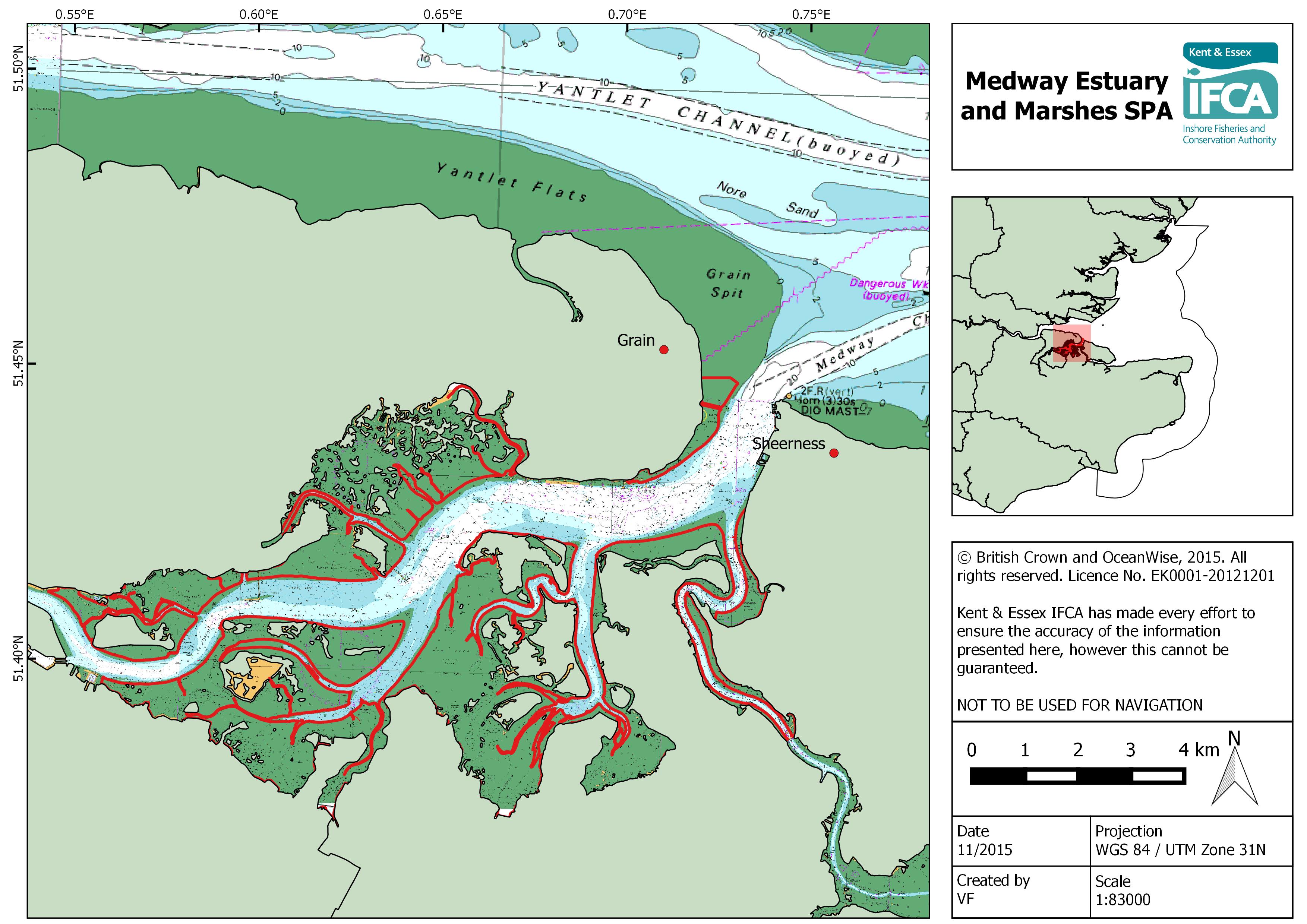01843 585310
info@kentandessex-ifca.gov.uk

01843 585310
info@kentandessex-ifca.gov.uk

Table 1. Qualifying features of Medway Estuary and Marshes SPA
Table 2. Supporting habitats of Medway Estuary and Marshes SPA.
Site overview
Located in north Kent, the Medway Estuary and Marshes SPA covers an area of 46.84 km2, including both marine and terrestrial areas. The river Medway forms a single tidal system with the river Swale, joining the Thames Estuary between the Isle of Grain and Sheerness. There is a diverse mix of intertidal habitats, including saltmarshes, mudflats, shell beaches and eelgrass beds. These habitats support a diverse range of water birds throughout the year, including breeding waders and terns in the summer and important numbers of geese, ducks, grebes and waders in winter.
Conservation objectives
Ensure that the integrity of the site is maintained or restored as appropriate, and ensure that the site contributes to achieving the aims of the Wild Birds Directive, by maintaining or restoring;
- The extent and distribution of the habitats of the qualifying features
- The structure and function of the habitats of the qualifying features
- The supporting processes on which the habitats of the qualifying features rely
- The population of each of the qualifying features, and,
- The distribution of the qualifying features within the site.
Site uses
An ancient charter in the river Medway confers the majority of the fishing rights on the Rochester Oyster and Floating Fishery trade guild. They are responsible for dredging, trawling and netting activities which take place in the area of the private fishery. Dredging occurs within the area for oysters on a commercial basis, and netting is also known to occur within the site. There is some intertidal hand working and bait collection on the banks of the river.
KEIFCA's role
KEIFCA is responsible for assessing the effects of commercial fishing within this site and must implement appropriate conservation measures to avoid damage to EMS by fisheries activities.
In addition to assessing the site and creating management plans, KEIFCA is also responsible for the enforcement of fisheries bylaws and regulations within this site.
© Kent & Essex IFCA 2024 - All Rights Reserved | Privacy Policy